Let’s talk...
About our child’s desires and dreams: We can talk about them, reflect on whether they are achievable, and explore how to turn desires into goals and what helps us achieve them.
About problem-solving: What challenges have we faced, and how have we successfully invented solutions? We can recall our child’s successful experiences.
About natural phenomena: We can observe a natural phenomenon, listen to our child’s explanation, and explore its scientific reality together, such as falling leaves, sunset, and sunrise, cloud formation, and rain.
About gifts: What gifts does our child wish to receive? What surprise gifts have delighted them?
About our shared experiences: What activities does our child want to participate in together? We can brainstorm ideas for an enjoyable and meaningful time together.
Let’s enrich our Language...
The moon: We can learn the basic phases of the moon (crescent, full, new). We familiarize ourselves with the concept of lunar months.
Nisan: It is one of the months in the Gregorian calendar (solar). We can recall the months and observe the characteristics of each of them.
Meanings of words: We can clarify new words and explain their meanings (gap, dim, stillness). We can think with our child about words that sound or mean something similar.
Let’s explore...
Light and shadow: We can choose a room for a nighttime game, turn off the lights, and use lamps to explore the images we can create by reflecting our shadows on the wall. We can invent shapes and movements and enjoy their shadows.
Moon phases: We can observe the moon for several days. We may photograph or draw it and compare its different phases. We may seek information from scientific sources.
Let’s create...
Enjoy songs and poems about the moon. We can perform expressive movements, dancing together to their tunes.
Prepare a moon-themed board: We can add shiny crescent-shaped strips to a black cardboard every day until it completes the full moon shape.
Let's talk...
About birthdays: What makes our birthday a special day? What celebrations do we desire? What activities and events do we want? What gifts have we received or wish to receive?
About love and care: How do we feel when everyone collaborates to make us happy? How do we feel when we care for others and prepare surprises for them? We can recall enjoyable moments when our loved ones surprised us and we can discuss different ways to express love. We may agree on a daily or weekly activity to add a special touch to our lives, such as preparing a meal together, reading stories, playing together, and visiting grandparents. What else can we do?
About collaboration: The family members collaborate and share tasks, making their child’s day joyful. We can think about the roles each of us can take to help and make others happy.
Let’s enrich our Language...
We read the story and explain the meanings of new vocabulary. We can pause at scenes and describe the drawings.
Creating a card for our family: We can add our names and a picture that brings us together, or some words of thanks and love. We can color and decorate it, then hang it in a special place in our home.
Let’s sing...
We can learn poems and songs about birthdays, love, and family. We can repeat them and perform suitable movements alongside it.
Let’s create...
We can prepare a surprise for one of the family members. What can we choose? We can think about what they like or need, tailoring the surprise to them. We may agree to make every weekend a special day for one family member.
Let’s play...
What if we exchanged roles for a day in our home? Who would be the father/mother/child? We can have fun thinking about others, describing their feelings, and expressing them.
Let’s talk about...
Behaviours and actions: We can follow the different situations in the text and talk about the behaviour of each of the parents and the child. We can ask our children: Why do you think the child behaved in this way? What is meant by the word “because?” What was the parents’ reaction at the beginning of the story? And how did their behaviour change at the end? How did the child’s behaviour change, and why?
Feelings: We can follow the different situations in the text and the drawings and talk about the feelings of both the parents and the child. We can ask our children: How does the child feel in different situations? How do the parents feel? Why do they think the parents felt this way? How did the child’s feelings change at the end of the story, and how did the parents’ feelings change, and why?
Life situations: The parents repeated the question “why” in many life situations, and Nadim’s answers were repeated with the word “because.” We can talk with our child about similar situations that occurred between us. We can ask them: How did you feel? Together, we can suggest alternative ways of approaching and communicating.
Let’s explore...
The word “why” is used to express protest. Together with our children, we formulate questions aimed at raising their curiosity and increasing their knowledge, such as: Why is the sky blue? Why do we eat? Why do we sleep? Why are colours created in nature? We can search the Internet and encyclopaedias for answers.
Let’s communicate...
Nadim did a lot of things on his own. We can look for a joint activity to do with our children in the family, such as: preparing a common meal; playing together…
Nadim expressed himself each time with the word “because.” We can also express and explain our actions, replacing the word with explanatory sentences in different situations.
Let’s imitate and act...
We play a role-playing game together. We can choose a life situation or an event in the story, and we act it out with our children. In this case, we switch the roles of the original situation so that the child plays the role of the parent, and the parents play the role of the child. We can replace the word “because” with our interpretations and our mutual dialogue.
Let’s talk about...
Use of screens: We may ask our children: Why do you think the parents prevented Rani from watching the screen so much? How does the continuous looking at screens affect us? How do we feel when our family sits with us while they are busy with their screens?
Alternatives to screens: Rani’s father suggested alternative activities to his son. We can talk with our child about things they like to do on their own and things they like to do with us, and we can include them in our weekly schedule.
Boredom: We can talk to our child about the times when they were bored. What helps them to overcome this feeling? We can share our feeling of boredom and how we deal with it with our child.
Let’s communicate...
We can reduce the time we spend on screens and play with our children. We might read an interesting book together, go for a walk, listen to music, or prepare a delicious meal. It would be great if we set aside a consistent weekly time for these activities.
Let’s create...
Create: We can help our child prepare a weekly calendar, in which they draw icons that symbolize activities they like to do alone or with their friends and family members. They will definitely be proud when they see it hanging on the fridge in the kitchen! – We can devise an agreement with our children about how long they sit in front of the screens and how to use screens at home, and we will stick to this agreement as a family.
Let’s explore...
We can explore apps in our mobile for fun family games.
We can search for the benefits and drawbacks of using screens for continuous periods with our children.
Let’s talk...
About the problem: in our first reading, and before we reach the solution, we should ask our child the following: the mother asked Alfie to find the solution to his problem, “How could he get the cake in a better way?” What do you suggest he should do? We can continue reading and ask our child again, what are the solutions suggested by Alfie? And what is the appropriate solution?
About our feelings: We can trace the drawings and talk about Alfie’s feelings. We can ask our children: How did Alfie feel when he saw his mother making cakes? How did he feel when she refused to give him the cake and asked him to think of a way to get it? How did he feel when he couldn’t find the solution? How did he feel at the end of the story?
About our attempts: Alfie tried several times and various ways to reach the solution. We can ask our children: Have you ever tried to get something or do something numerous times? How many times have you tried? When do we feel discouraged? how many trials does it take before we give up? What do we do when we are frustrated?
About problem solving: We can have a conversation with our child about similar situations in which they must find solutions to situations or problems. We can ask them: Did you encounter a problem? what is it? How did you feel? How many times have you tried? How did you find the solution? Who helped you? If you didn’t find a solution, how did you feel? How did you deal with the feeling of frustration?
Interaction between mother and child: The mother prepares cakes for Alfie and the rest of the family. We can talk with our child about what is happening in our home: What are the things that the mother and father do for us? What are the things you like to do together?
Life and social situations: Alfie’s mother portrayed an advanced model for dialogue and for giving and taking, by demonstrating it in her behaviour. We can have a conversation with our child about what is happening in our home. We can ask them: What happens when you do something different from what our mother or father wants? How do you behave? How would you like them to talk to you?
Let’s communicate...
We can spend quality time together with our child, preparing a cake, or preparing a communal meal.
Let’s enrich our language...
Our story contains emotional, mental, and social words, such as: to love; to desire; frustrated; thought; an idea occurred to him; an idea popped into his head; thanks; please; sorry. We should use these words in everyday context.
Let’s act and create...
We can choose different social situations, and with our children, we can familiarize ourselves with mild expressions that are appropriate for these situations. Together, we can act out the appropriate behaviour and use the appropriate social expressions – for example: a birthday party; visit to a patient; an apology; entertaining a guest; being a guest; when we need help…
Every time Dad...
Every time Dad kisses his son, we see an indication of the animal whose kiss he imitates. The illustration may be of a picture on the wall or the animal may show in Dad’s clothes. We can follow these symbols of the various animals and encourage our child to find them in the book’s illustrations.
Undoubtedly the child...
Undoubtedly the child will laugh a lot if we kiss him as the father does in the book while reading it.
How does the kitten...
How does the kitten give a kiss to his parents? What do you think of the bee’s kiss? The child might enjoy experiencing different types of animals’ kisses.
The mouse’s kiss...
The mouse’s kiss has a mustache and the monkey’s kiss is jumpy and curved! The text is full of positive descriptions for kisses that can enrich the child’s fantasy, his language and his senses. It would be fun to think together of new types of kisses for different animals.
Baby Bear...
Baby Bear refuses to go to sleep and separate from his toys, as do many children, who may have an easier time going through this process with us. It is important to talk to children about the importance of getting enough sleep.
We can discuss...
We can discuss our child’s ritual for going to bed. What does he/she like – and what not? We can share with our child what helps us to fall asleep such as having a hot drink, or reading a book…
We may want...
We may want to make the kissing box for the family. Each person can kiss the box using a dark lipstick color, and let the child use the for his/her valuable things.
We can follow...
About the feelings of the two bears: We can follow the feelings of the two bears with our children, we can name them and we can talk about the reasons they feel this way.
We can ask...
About the preoccupation of parents and children: The Big Bear was busy with household chores, and the Little Bear found something to occupy itself with at that time. We can ask our children: What do they like to do when the parents are busy?
We can talk...
About empowering our child and making them feel capable: The Little Bear organized and cleaned his cave and made his own bed. We can talk to our child about the things they can do on their own.
About independence...
About independence and support: The Little Bear felt big. We can talk to our child about what it feels like to be grown up. We can also ask them if there are things that make them feel small, and we also ask them: How would you like us to support you?
We exchange roles...
We exchange roles: the parents act out the children’s role, and the children act out the parents’ role. After that, we can talk about our feelings, our thoughts, and our behavior. We can listen to our children and try to understand what they think, how they feel and how they see us.
A Tent...
A Tent: We can build a tent out of sheets and pillows with our children. We can read a bedtime story to our child.
We can browse...
Capability Album: Together, we can browse the pictures of our child from birth until today, and we can talk with them about things they were unable to do, and about things that they are able to do now.
Let’s have a conversation...
-About ways of expressing love: The girl expressed her love for her mother by surprising her and making biscuits for her. We can talk with our child about ways to express love, and we ask them: How can we express our love for the other? We can suggest several ways, such as expressing love with words or cards, or with body language such as hugs and giving kisses, or with actions such as helping and preparing surprises, as the girl did.
-About sympathy: the child was very sensitive to her mother and sympathized with her, so she did not want to wake her from her sleep. We can talk to our child and ask them how the mother feels about this behavior, and we can also ask them: How is it possible for the mother to be sensitive and sympathetic to the child? And how can a child be so towards the parents? We can give examples from our lives.
-About initiative: the girl took the initiative to prepare biscuits for her mother. The mother appreciated her child’s attempt and praised her. We can talk about the initiatives that our child has taken for the other (for example: for members of their family), or the initiatives that they can generally take for the other. We can also deal with their feelings and the feelings of the other. We should praise and encourage them.
-About flexibility and dealing with problems: Although the child made playdough instead of biscuits, the mother did not get angry or complain, on the contrary; She encouraged her and explained her she made playdough. We can talk with our child about experiences that did not go as we wanted or expected. How did they feel? How did they act? How did the parents act? How did we react?
-About surprises: Children love surprises and enjoy receiving and preparing surprises for their parents. You may want to decide with your child to prepare mutual surprises; Like making them a favorite dessert or inviting someone they love to your house.
Let’s share...
-We can prepare a cookie with our child, or a plate of salad. We can share the process of preparation together. We can also name the objects and the verbs. we taste; touch, have fun together.
Let’s talk...
-About the girl’s feelings: We read the story with our children several times. We then follow the drawings and discuss them as an expressive artform and talk about the feelings of the girl in the different stages: when she prepares to go out for a walk with her father; when she is with the teddy bear; when she is with the animals of the forest; and at the aquarium with her father.
-About relationships with family: The girl talked about experiences and pleasant times she spent with her father and her doll in the winter. We can talk with our children about the common adventures and activities that we have done, and that they would like to do with us and with their siblings.
-About support and reciprocal relationships: the girl said that the father and the doll support her in difficult times and encourage her, and that they need her. We can talk with our children about the meaning of difficult times, and ask them: How did the father and the teddy bear need the girl? How do we encourage others in difficult times? Did you have a hard time? How did you deal with it? Who supported and helped you?
-About dolls and favorite objects: We can talk to our child about his/her favorite object. The girl played with her teddy bear, and he helped her discover new things and build new friendships, and so she was creative with her imagination and her play. We can ask our children: What do they like about their object/toy? And how do they play with it?
Let’s enrich...
-Let’s enrich our emotional linguistic dictionary: Several vocabulary describing different needs and different emotional states are mentioned in the book. We can have a conversation with our child about their meanings and what they signify. For example: What is meant by the words “protect me?” When are things difficult, and what does that mean? encourage me? Does someone need me? When do we feel the need for encouragement? It is important to relate the vocabulary to the context and the lived experience. For example, our child can apply them to talk about their own lives.
We make hats...
-We make hats: The text and the graphics suggested that the Big Bear was actually a bear because of the hat, and we were surprised to find out otherwise. With our children, we can bring different hats, such as a hat that looks like a rabbit, a rooster, and other animals. We can then let our imaginations run wild and play different roles while wearing those hats.
We can go out...
-The father carried his daughter on his shoulders, and went out for a walk in the nearby ocean. We can go out with our children for a walk in the nearby ocean. We can explore, play with them, and have fun!
We have guests...
We have guests! We can have a conversation with our child about the preparations we make to receive guests in our family. How does our child prepare to receive their friends?
We can talk...
We can talk about what excites our child: is it vising a place they love? Or playing with friends they like? Or reading a new story with us?
We can stop...
We can stop and look at the text and drawings on page 27. How does Tamara feel?
A workshop...
A workshop for preparing dyes for fabrics from fruits and vegetables! Red from beetroot and strawberry Orange and yellow from onion peel Green from spinach Blue from red cabbage, adding a little sodium carbonate. We boil a cup of fruits or vegetables with two cups of water on low heat for an hour, then we drain the mixture, and we will get a wonderful fabric dye, which our child may want to use to renew the colors of an old shirt!
Colorful finger paint...
Colorful finger paint! If we mix 1/2 cup of flour with a cup of dye solution and a pinch of salt, we get a bright and healthy finger paint color.
The repetitive sentences...
The repetitive sentences in the text allows the child to take a greater part in telling the story. We can stop reading and let the child enjoy repeating these sentences: “What is this noise? It seems that the little bunnies have gone out of bed” or “at night we do not ride the rails nor play with the train…”
Why do bunnies play...
Why do bunnies play at bedtime? Maybe they find it difficult to fall asleep, or to leave their toys It
We can chat...
We can chat with our child about sleeping rituals that he loves (for example: reading a bedtime story or playing together with a toy they love). We may wish to share with them what we like to do in the evening to relax after a long day. This conversation helps reinforce the child’s sympathy and understanding of the parents’ need to rest and to finish their own affairs after the children sleep.
Good night, sweet dreams...
“Good night, sweet dreams,” the parents tell their little bunnies. What pre-sleep greetings do we use in our family? Which do we use in the morning? It is fun to create special greetings with our child that we can exchange with the rest of the family.
We can use...
We can use the drawings to keep track of the games that the bunnies play. Which games does our child like? And which ones do they want to play with us? Let’s play together!
After reading the story...
After reading the story with our child, we can close our eyes and try to recover the smell or smells that remind us of each other. Which smells relate to other family members in our memories?
Places are also...
Places are also associated with specific smells in our memories. Which scents do we smell when we remember the house, the garden, or grandfather’s or a friend’s house?
We can talk...
We can talk about scents that our child loves at home, and others they do not like. They may wish to draw the sources of those scents. How can we make our home smell sweeter?
What do I love...
What do I love doing with my mom? We may want to make a list, which we can hang somewhere in the house. Every week, we can choose an activity to do together.
How do we choose...
How do we choose a gift for someone we love? We can talk about things that we take into consideration when we choose a gift, such as: the person’s taste, interests, needs, and others.
The scent of...
“The scent of my father/grandfather/my grandmother/my sister/brother” may be the title of a beautiful book that we help our child in writing and drawing.
What is this smell...
“What is this smell?” could be a fun game in which all family members can participate. We collect various objects (food, plants …) and close someone’s eyes, and they must try to figure out the source of the scent based only on its smell.
We can continue...
We can continue the scenes of the book with our child: we laugh a lot when… we can act or imitate different actions that cause the child to laugh such as, tickling, or piggy back rides.
We can have...
We can have a conversation about things that make our child laugh, at home, in the street and in class. We can encourage him to draw these things, and we write it down using his language.
What makes...
What makes every family member laugh? We can encourage our child to conduct a “small research study” to see what family members find funny, and to imitate everyone’s laugh in the family.
We can search...
We can search together the child’s library, and find books that make him laugh. Maybe read those books again together, or maybe watch a funny movie together
“Freezing” is a fun game...
“Freezing” is a fun game. The participants wander around in the room as music plays, but when it stops every player freezes and a player, “the clown” should try to make everyone else laugh with facial expressions — and without touching the “frozen” players.
The illustrations...
The illustrations in this book are the main feature in it, as they clearly illustrate the events of the story and reveal more than the written text. When we first encounter the book, we review it with the children and encourage them to “read” the story as they figure it out according to the illustrations alone.
There are five pages...
There are five pages in this book (10-14) that show Sa’ad walking in the rain until he falls. We look at the second illustration (page 11) and wonder with the child about other possibilities of what may happen next: will the newspaper fall in the puddle and get wet? Or will Sa’ad’s hat fly away? This game of guessing strengthens the child’s ability to foresee upcoming events according to previously provided information.
Sa'ad's mother always...
Sa’ad’s mother always consoles him by hugging him and remediating his wounds, and preparing a beverage for him. How do we console others, and how do we like to be comforted when we feel pain or upset?
Sa'ad falls on...
Sa’ad falls on the sidewalk and wounds his leg. We talk about caution on the roads and how we can protect ourselves from harm.
Sa'ad's mother does...
Sa’ad’s mother does a silly, cute thing while trying to fix his hat, as all parents try their best but cannot always come with magic solutions for their children’s problems. We remember together similar events that have happened with members of our family.
Hat decoration workshop!...
Hat decoration workshop! We have fun with our children while decorating different hats. We can include family members and friends in this activity. We use different materials, such as colorful feathers, buttons, stickers, fabric dyes, etc.
We can talk...
We can talk to our child about the book’s title: What does it mean? We can think together about other verbs that have the same meaning, such as “imagine” or “presume,” to emphasize to the child that these events are only imaginary in the mind of the little monster.
After reading the story...
After reading the story, we may wish to spend a day with the family at home or outside! Children enjoy choosing the places and activities they love, and this gives them a sense of agency and responsibility. Encourage them to get involved in the planning and preparation. Here we go!
The beautiful illustrations...
The beautiful illustrations of the book won several international awards. The illustrator was able to depict the monster beautifully (which is supposed to be frightening), and he succeeded in conveying, with small details, the atmosphere of a warm relationship between the mother and her child. We can look at the illustrations together and talk about what we like about them.
We can talk with...
Together, we can...
Together, we can look at the cover of the book and read its title aloud. We can talk with our child about the paradox between the the title, which suggests that the child is asleep, and the illustration, which shows the opposite. We can browse the book’s drawings, looking for the smile on the father’s lips, and the smile on Alfie’s lips. What does it tell us about the feeling and mood of each of them? We can search for other physical expressions and talk about what they indicate.
Alfie’s father in...
Alfie’s father in this story is the one who cares for him and takes care of him. This is an occasion to have a dialogue with our child about the things they would like to do during the day with their father in particular.
The illustrator uses...
The illustrator uses the “collage” method, in which she inlays her drawings with pieces of cloth, with wool threads, and with various pictures from newspapers, magazines and postcards. Together, we can design a painting in which we mix these elements, and add others that are available in quantity at home.
We can chat...
We can chat with our child about the song(s) he or she likes, and sing it together.
In the repeated...
In the repeated readings of the story, we can stop at each scene and repeat the song with the movement: we can tap on the bottles, and bang on the pots, etc.
Together, we can...
Together, we can listen to songs with different melodies, rhythms and in different languages. We can encourage our child to talk about how they feel when they hear each song, even if they do not understand the words.
We can collect...
We can collect musical instruments (if we can find any) or other home instruments that make sounds; Kitchen utensils, small bells, wooden spoons, and more. We can then sing a song we love together and use our musical creations!
We can prepare...
We can prepare a workshop to make simple musical instruments. Here are some ideas:
Cardboard cylinders...
Cardboard cylinders that are sealed at both ends, with beads, chickpeas, or beans inside, make excellent sounds!
We can cover...
We can cover the small milk cans with rubber rings of different thicknesses (or scrunchies), and we get stringed instruments.
Cardboard rolls...
Cardboard rolls in the shape of a cone can be used as mouthpieces for children to blow into.
Children of this age...
Children of this age will enjoy songs accompanied by movements or games. In addition to what is available commercially, it is interesting to recall popular songs that are accompanied by a game or song, such as: “this is how the fish swim,” and others.
How would you...
How would you describe Little Monkey’s mum so that Butterfly could find her easily? How would you describe your mum?
Look among toys...
Look among toys at home for stuffed animals mentioned in the book. Your child can draw the animals or cut their pictures from old magazines. Tell the story using the animals. Encourage your child to think of other descriptions of the animals. To what animals will they lead the puzzled butterfly?
Enjoy a game...
Enjoy a game of “Guess What.” Collect a number of small objects around the house and hide them in a closed card box with an opening that allows your child to get in a hand. Ask your child the guess what the object is while describing it. Encourage him/her to think of an object and to describe it to you.
Butterfly has a...
Butterfly has a hard time finding Little Monkey’s mother because her own little ones do not look like her. What other creatures don’t look like their parents?
Have a conversation...
Have a conversation with your child about their new experiences at the kindergarten: For example, you can ask: Did you learn anything new? What makes you happy to go every morning to kindergarten? Does anything confuse you or upset you?
We can have...
We can have a conversation with a child about the things they would like to take from home to the new kindergarten, such as a toy, or people to come along. Is it possible, and what are the alternative solutions in case it is not?
Remember things...
Remember things we love to do together: such as the whole family going to a picnic, reading a book, or making a favorite cake together.
People express...
People express their happiness in different ways: some sing, some dance, and some give a hug to people they love. We can have a conversation about the ways we express our happiness, and think of other family members or friends, and enjoy imitating their ways to express happiness.
Happiness wings...
Happiness wings workshop! We have a conversation about things that make us happy, so we feel we are flying like the child in the story. We might want to support our child to draw what makes him happy, or by using play dough. We design together wings and stick on it what makes us happy and fly.
When the child...
When the child sat on her fathers’ shoulders, she saw the world differently from above. What does the child see if they sit on our shoulders? How does their neighborhood look if we look together from the house roof top?
Take a look...
Take a look at the first illustration in the book: what does Saad feel while he is on his way to the barbershop? What in the illustration can tell us about his feelings? We can have a conversation with our child, about his feelings in the same situation.
In general...
In general, a parent or older sibling goes with the child to the barbershop/beauty parlor. This gives a child a good feeling that someone has devoted special time only for him/her. With whom does our child like to go with? Is there a special “ritual“ for this visit?
What do we like...
What do we like about our visit, and what annoys us? We might like to share our children with our experiences.
Saad’s new hairstyle...
Saad’s new hairstyle surprises his mother, friends and relatives. Do they like it? We can talk with our child about whether they like it or not by looking at the illustrations.
Some parents like...
Some parents like to keep some hair from their child’s first haircut or keep some photos of it. That is an occasion to go over the album pictures, and to recall this experience and to talk about the feelings we had.
Our children go...
Our children go with us to multiple public places such as, the post office, the bank, the market. This helps them gain new skills such as waiting for your turn, to choose, to count money etc. We can plan a visit to one of these places and take some photos of it. We can use these photos to write a book using these photos.
Welcome to the...
“Welcome to the weird hairstyle exhibition”! We can invite the family children, and maybe adults as well, and bring for them combs, hair ties, hair dye and other stuff, so the designers can use them to make the weirdest hairstyles ever!
We can note...
We can note, with our child, the sign the day is ending, like in the book (the sky color change, the moonlight and the stars…). We can talk about the end of the day signs at home and outside our home (such as parent/s coming home, making dinner, hearing the pray from the mosque, streetlights shining).
The little animals...
The little animals express their sleepiness in different ways; the little panda yawns and lays down, and the chicks stop tweeting. We can talk with our child about what he/she feels when sleepy. This helps raise our child’s awareness of signs that his body gives when he feels tired and the importance to get enough sleep.
We can look...
We can look in the book and see how each animal gets ready for sleep, and have a conversation about what we do together to prepare to go to sleep. We can share with our child what we as parents do to get ready to sleep (such as making sure that the door locked, reading a book, having a hot drink…)
Our child might...
Our child might want to draw his “Going to sleep ritual” and write a short text about it. We can collect them all as a book and name it “Good night….” (the child’s name)
The little rabbit...
The little rabbit says good night to a group of animals. To whom do we like to say good night, how?
At the end...
At the end of the book, the mom rabbit assures her baby when she hugs him and says: ”Good night, mama loves you”. We as parents can think about what we like to say to our child before he/she falls asleep. The last question in the book can help the child to express his feelings and thoughts before he falls asleep.
Let’s sleep...
“Let’s sleep, let’s sleep…” one of dozens of lullabies for children in our culture. Even when they are a bit older, children often still enjoy listening to us singing these songs before they go to sleep.
Children like to...
Children like to help you clean the house, it gives them a sense of independence and belonging. You can go over the illustrations together and see the activities that Anbar and his mom do together. This is an opportunity for you to have a conversation about the things that your child like to do to help you at home (such as setting the table, or folding laundry).
Sometimes it is hard...
Sometimes it is hard for the children to understand that parents need space of their own. You can have a conversation with your child about activities around the house that you (parents) do alone and what you enjoy doing together. Make a plan for 1 activity or more to do together, and enjoy the time.
Anbar builds a tent...
Anbar builds a tent in the garden and invites his mom to visit. Children like to play “house” and invite us to play with them. You may find a place at home or in the garden for your child to make a home and be ready to invite you.
Anbar makes a surprise...
Anbar makes a surprise to his mom and leads her blindfolded to his toy home. Children like surprises, and they enjoy making and getting surprises. You can decide with your children on reciprocal surprises (such as making a favorite cake, or inviting a favorite guest).
3 or 4 years old...
3 or 4 years old children are impatient, because they still do not fully understand the concept of time. We can help them – as Anbar’s mom did – specifying time by describing events (I can play with you after I wash the dishes). It makes it easier for the child to wait, if they know in advance till when. For this purpose, you can use an hourglass, or an alarm. You can plan in advance an activity that you would like to do together.
In some way...
3 and 4 years old children are dependent, in some way, on their parents for playing, and it is hard for them to create a game by themselves. It would be nice if you can prepare a book, with your child, and call it “what I like and what I like to do alone”. Each page of it can contain a picture that describes what the child likes to do. You can write on each page “I am able/ I like…” (drawing, building a cube tower, to water the plants in the garden…). Then you will be able to tell your child – as Anbar’s mom told him – “good job!”
 Little Gorilla
Little Gorilla 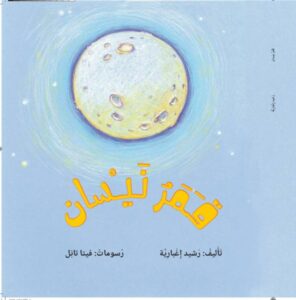 Nisan’s Moon
Nisan’s Moon 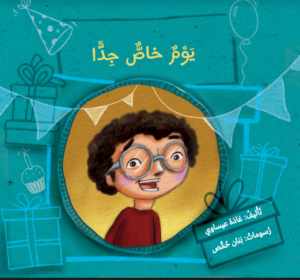 A Very Special Day
A Very Special Day 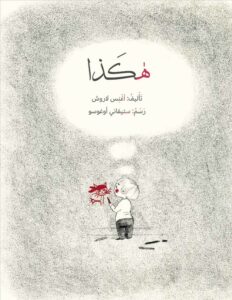 Because
Because 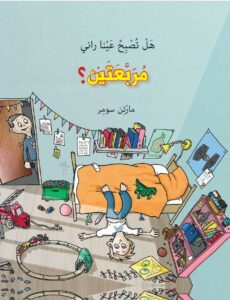 Will Rani’s eyes become square?
Will Rani’s eyes become square? 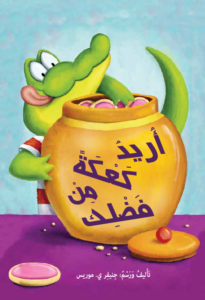 May I please have a cookie
May I please have a cookie 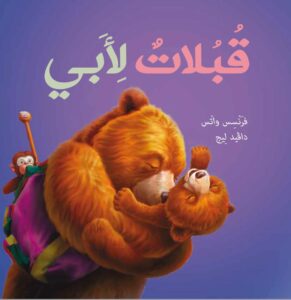 Kisses for Daddy
Kisses for Daddy  Sleep Tight Little Bear
Sleep Tight Little Bear 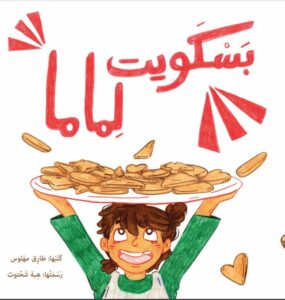 A Biscuit for Mama
A Biscuit for Mama 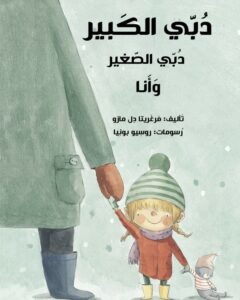 My big bear, my little bear and me
My big bear, my little bear and me 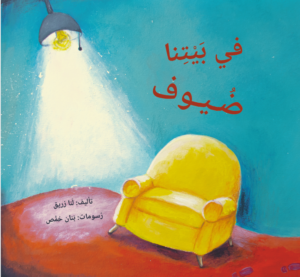 We Have Guests
We Have Guests 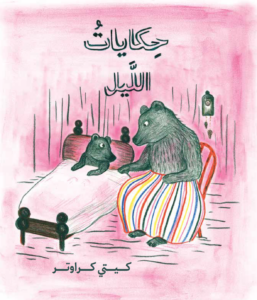 Stories of the Night
Stories of the Night  The Bunnies are not in their beds
The Bunnies are not in their beds 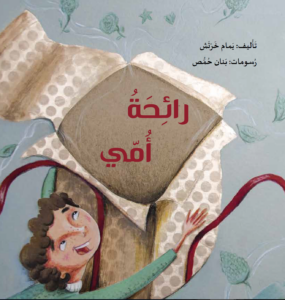 Scent of My Mother
Scent of My Mother 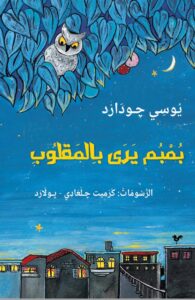 The Backward Owl
The Backward Owl  How Much I Laugh!
How Much I Laugh!  Saad and His New Cap
Saad and His New Cap 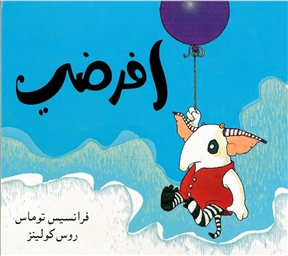 Supposing
Supposing 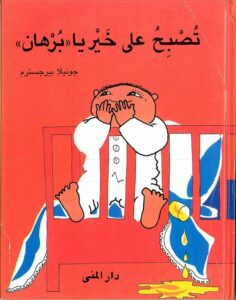 Good Night Burhan
Good Night Burhan 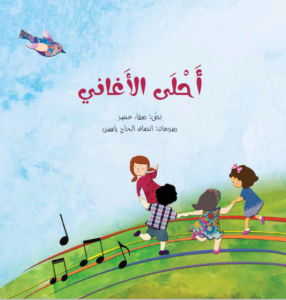 The Most Beautiful Songs
The Most Beautiful Songs  Monkey Puzzle
Monkey Puzzle 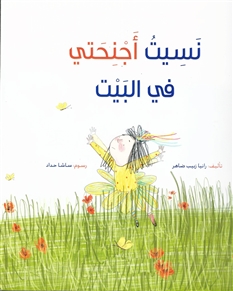 I Forgot My Wings At Home
I Forgot My Wings At Home 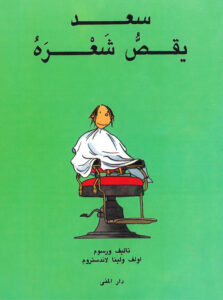 Will (Sa’ad) Gets a Haircut
Will (Sa’ad) Gets a Haircut  Good Night Little Ones
Good Night Little Ones 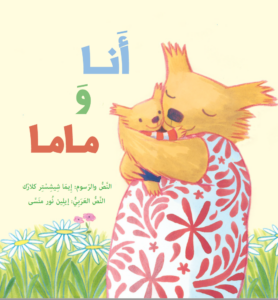 Mummy and Me
Mummy and Me 
